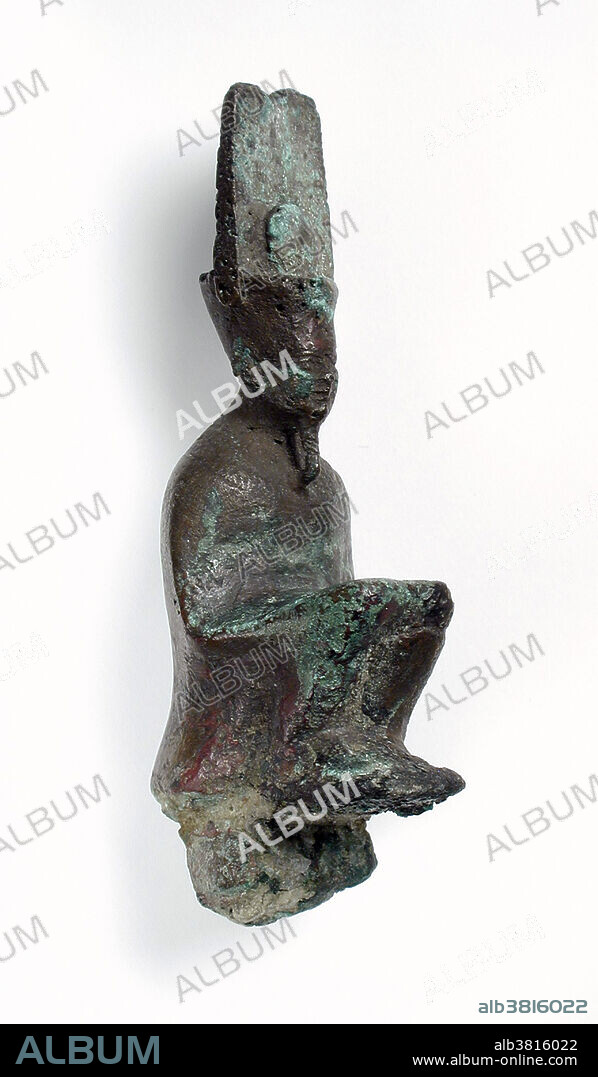alb3816022
Amun-Ra, Egyptian King of the Gods

|
Añadir a otro lightbox |
|
Añadir a otro lightbox |



¿Ya tienes cuenta? Iniciar sesión
¿No tienes cuenta? Regístrate
Compra esta imagen

Título:
Amun-Ra, Egyptian King of the Gods
Descripción:
Traducción automática: Estatua de bronce del dios egipcio Amón-Ra, Egipto, Período Tardío (664-332 a.C.). Amón era una deidad local de Tebas. Tras la rebelión de Tebas contra los hicsos y con el gobierno de Ahmose I, Amón adquirió importancia nacional, expresada en su fusión con el dios Sol, Ra, como Amón-Ra. Su posición como Rey de los Dioses se desarrolló hasta el punto del virtual monoteísmo donde otros dioses se convirtieron en manifestaciones de él. Junto con Osiris, Amón-Ra es el dios egipcio más ampliamente registrado. Principalmente, el dios del viento Amón llegó a identificarse con el dios solar Ra y el dios de la fertilidad y la creación Min, de modo que Amón-Ra tenía la característica principal de un dios solar, dios creador y dios de la fertilidad.
Bronze statue of the Egyptian God Amun-Ra, Egypt, Late Period (664-332 BC). Amun was a local deity of Thebes. After the rebellion of Thebes against the Hyksos and with the rule of Ahmose I, Amun acquired national importance, expressed in his fusion with the Sun god, Ra, as Amun-Ra. His position as King of Gods developed to the point of virtual monotheism where other gods became manifestations of him. With Osiris, Amun-Ra is the most widely recorded of the Egyptian gods. Primarily, the god of wind Amun came to be identified with the solar god Ra and the god of fertility and creation Min, so that Amun-Ra had the main characteristic of a solar god, creator god and fertility god.
Crédito:
Album / Science Source / Los Angeles County Museum
Autorizaciones:
Modelo: No - Propiedad: No
¿Preguntas relacionadas con los derechos?
¿Preguntas relacionadas con los derechos?
Tamaño imagen:
2550 x 4364 px | 31.8 MB
Tamaño impresión:
21.6 x 36.9 cm | 8.5 x 14.5 in (300 dpi)
Palabras clave:
AMEN • AMON-RA • ANTIGUO • ANTIGÜEDAD • ARQUEOLOGIA • ARQUEOLÓGICA • ARQUEOLÓGICO • ARTE • ARTEFACTO • BRONCE • BRONZE • CIVILIZACION • CULTURA • DEIDAD • DEIDADES • DIOS • DIOSES • EGIPCIO • EGIPTO • EGIPTOLOGIA • ESCULTURA • ESTATUA • ESTATUARIA • FAMOSO • HISTORIA • HISTORICO • IMPORTANTE • LEGENDARIO • MITO • MITOLOGIA • MITOLOGICA • MITOLÓGICO • OBRA DE ARTE • OBRA DE BRONCE • RELIGION • RELIGIOSO • REY • SOL • SOLAR • STATUE
 Pinterest
Pinterest Twitter
Twitter Facebook
Facebook Copiar enlace
Copiar enlace Email
Email
